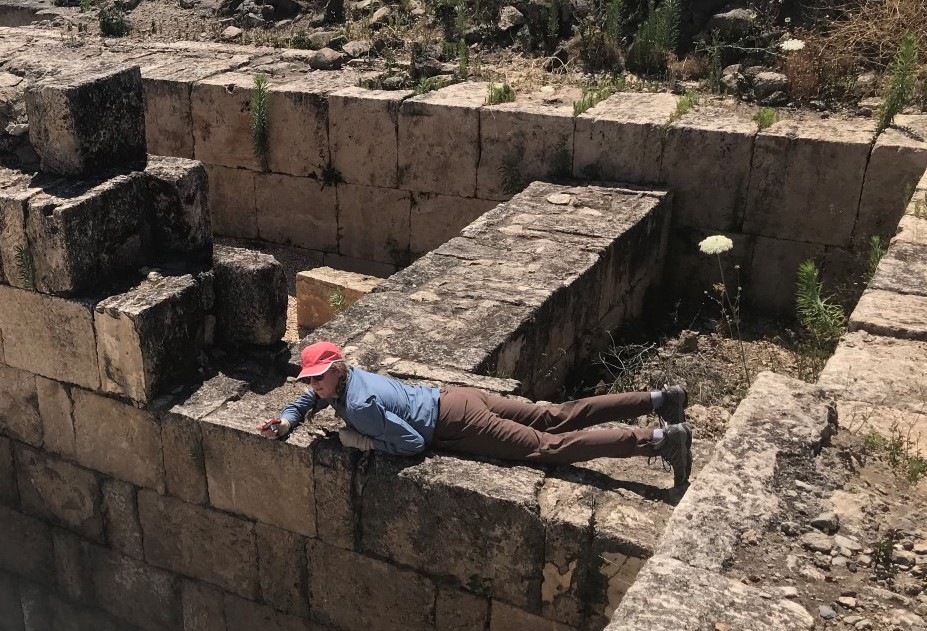Affiliation: Boston University

Becky Martin is an Associate Professor of History of Art & Architecture and Archaeology at Boston University. She is the co-director of the Tel Dor Excavation Project with Ilan Sharon (Hebrew University) and Assaf Yasur-Landau (University of Haifa). Dor is a coastal tell site in southern Phoenicia (modern Israel) with Bronze Age to Roman Imperial era occupation (later occupation flourished just off the mound). Systematic excavations began in 1980; joint land and sea excavations are now conducted in even-numbered years with odd years dedicated to publication. We are currently working to complete a publication of the Persian, Hellenistic, and Roman levels of Dor Area G. Dr. Martin is an AIA Kershaw Lecturer for 2022/2023.
Phoenicians are more popular than ever. They have assumed a starring role in ancient Mediterranean studies that could not have been anticipated even by the founder of the field, Sabatino Moscati. A recent boom in scholarship shows how the field has grown, even while it also reveals how much remains in question—including the ways that we attempt to define Phoenicians in the archaeological record from Lebanon to Spain. In this presentation, I use the excavations of Tel Dor (Israel), where I serve as a co-director, to ground the discussion of Phoenicians in the material evidence, paying special attention to religion in the Hellenistic and Roman eras. Dor has a rich record of religious activity in these periods, including two pairs of temples, figurines, dog burials, and coins bearing images of the city’s foundation hero and civic gods. The lecture will walk through these finds and what they can tell us about the ongoing role of archaeology in understanding Phoenicians.
Short bibliography and/or website on lecture topic (for lay reader):
Nitschke, J.; Martin, S. R.; and Y. Shalev. “Between Carmel and the Sea, Tel Dor: The Late Periods.” Near Eastern Archaeology 74.3 (2011): 132-54.
Thanks to its peculiar semi-iconic form, the Greek herm is instantly recognizable. The earliest herm statues were deliberately primitive, with the head of a mature male set upon a pillar adorned only with two rectangular projections and an erect phallus carved in high relief. Ancient texts and images show that herms were beloved, but neither ancient sources nor modern scholarship can make sense of the herm’s appearance. Most scholars believe that its origins as a statue type can be found in the sixth century BCE, probably in Athens and its environs. The clearest original function of the sculpted herm relates to its namesake, the god Hermes, and his power to mediate, guide travelers, and enforce boundaries. Despite the herm’s seemingly specific function and physical characteristics, the statue type not only endured but also its functions expanded. One of the most popular roles for the herm was as a portrait type, used even for women. In this lecture, I aim to understand what made herms so appealing by tracing the story of their murky origin in Greece to their remarkable proliferation in Rome and beyond.
How do we know when we are looking at images of Africans in Greek art? And how can we talk productively about what Greeks saw in these images? Neither question has a straightforward answer thanks to the conventions used by Greek artists and the conflicting expectations of ancient and modern people about the representation of “race”. In this lecture, I consider the increasingly popular subject of the representation of Africans in the ancient Mediterranean by focusing on the Greek visual evidence, especially vase paintings of Aithiopians. I first explore the somatic approach used by Frank M. Snowden, Jr. While his influential work is only sometimes useful for identifying Africans in Greek art, it is revealing of the ideological frameworks Americans bring to the subject. I then offer observations about how current scholars employ terms such as “Negro”, “Black”, and “African” (or “Black African”) to describe painted and plastic imagery. I conclude by sharing some alternative approaches for seeing and naming Africans in Greek art.
Short bibliography and/or website on lecture topic (for lay reader):
Jeremy Tanner. 2011. “Race in Classical Art.” Apollo Vol. 173, Issue 584.
Tim Whitmarsh. 2018. “Black Achilles: The Greeks didn’t have modern ideas of race. Did they see themselves as white, black – or as something else altogether?” Aeon (link: https://aeon.co/essays/when-homer-envisioned-achilles-did-he-see-a-black-man).